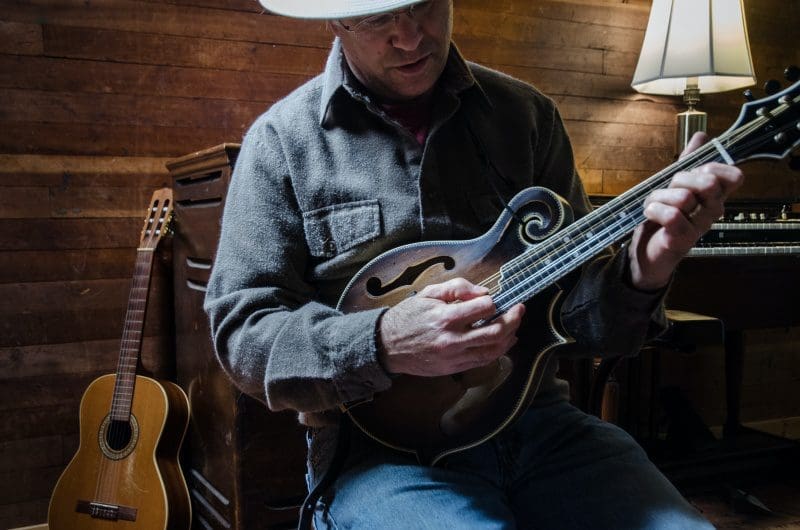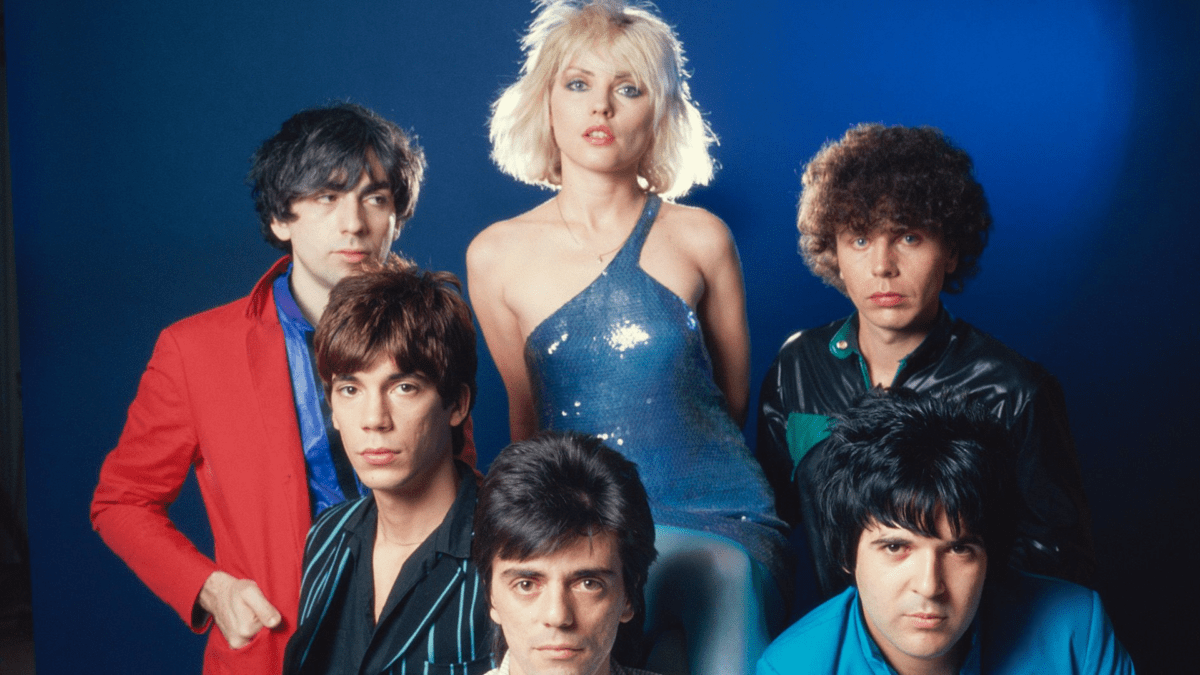
From its roots in the Appalachian Mountains to today’s global stages, bluegrass music encapsulates a rich tapestry of history and cultural significance. The iconic genre is steeped in tradition and has resonated through the generations, creating a legacy of timeless classics. A harmonic blend of country, jazz, and folk, it is recognised for its distinctive acoustic instrumentation and high-pitched harmonies.
Journey with us as we delve into the vibrant history of bluegrass music and spotlight its greatest hits. We’ll explore the stories behind the strumming banjos, the fiddling violins, and the soulful vocals that have shaped this beloved genre. Prepare to be enthralled by the enduring allure of bluegrass music!
What Is Bluegrass Music?

Bluegrass music originates from the Appalachian Mountain region in the USA, a vast land mass of hills and mountains, which is likely why early bluegrass was known as ‘mountain music’ or ‘Hilly-billy music’. This area was populated by mainly Scottish, English, and Irish communities, who came along with the folk songs and ballads of their native lands. This music stayed amongst the local communities up until the invention of the phonograph. However, after the development of early radio in the latter half of the 20th century, the once localised genre was now given a nationwide audience.
The standard make-up of a bluegrass band is usually a fiddle, guitar (first brought over from Europe by immigrants), mandolin, banjo, and bass. Most of these instruments can take the ‘head’ or ‘lead’ interchangeably, though not usually the bass. Bassists often incorporate traditional blues influence as a 12-bar line, while they also usually play pizzicato – plucking the strings.
Much like jazz, bluegrass musicians typically play more freely than in earlier versions of the genre. It is, in a sense, more ‘expressionist’ and heightened than previous forms in every aspect, with faster paces and more harmonically complex melodies. It is clear through these jazz influences that there is also a strong influence of African American music. Incidentally, the banjo, a quintessential symbol of bluegrass, was brought to the USA during the slave trade.
Bluegrass Music Vocals

However, one of the most aurally distinguishable features is the unique vocal harmonies and narrow vocal range in which these harmonies lie, sometimes known as the ‘stack’. Lead vocalists often use thin-fold vocal contact and forms of falsetto to hit higher ranges. This was sometimes known as a ‘high lonesome sound’. Additionally, the ‘stack’ is a three-part vocal harmony with dissonant or modal harmony in the top range and gets its name from the proximity of the intervals of the notes vocalists use in harmonies. The lead singer tends to hover between tenor and baritone. Their vocals are, therefore, closely ‘stacked’ together, unlike the usual major/minor harmonics.
Bill Monroe and Kentucky Bluegrass Music
The name ‘Bluegrass’ refers to a specific type of grass grown locally in Kentucky, the birthplace of Bill Monroe. Bill is widely regarded as the godfather of ‘blue grass music’. His first appearance was at the Grand Ole Opry in 1939. A year earlier, he’d formed the ‘Blue Grass Boys’. The band fused aspects of traditional country and folk music with classic features of jazz arrangements, such as comping, breakdowns and soloing or ‘taking the lead/head’. They also incorporated rhythmic jazz elements such as syncopation and off beats, unlike the more traditional straight beats in most other Western music at the time.
Alongside being a pioneer of bluegrass, there are many other reasons why Bill Monroe is regarded as the godfather of the genre. He launched the careers of some of the most notable musicians in the genre. Some historical accounts note his Grand Ole Opry performance as the first example of bluegrass; many other fanatics, however, argue that the distinct sound we now recognise as ‘traditional bluegrass’ came later, in 1945. This was when guitarist Lester Flatt teamed up with banjoist Earl Scruggs, who was only 21 years old, to form a group called ‘Foggy Mountain Boys’. However, Flatt, Scruggs and many others came up through Monroe; thus, many still regard him as the most influential. Scruggs also developed a new style of fingerpicking, using three fingers, that was later coined the ‘Scruggs style’.
Bluegrass Music Subgenres

Over the years, bluegrass has evolved into several different subgenres. These subgenres have taken influence from other genres and from the new sound possibilities that technological advancements have presented. In doing so, they have kept bluegrass fresh and alive, moving with the times and introducing the genre to new audiences.
Bluegrass Gospel Music
Musically, bluegrass is a blend of early blues, country, and jazz music. These genres also influenced bluegrass lyrically; the themes and issues they explored were central to the lyrics in bluegrass songs. However, immigrants in many southern states that would later create ‘mountain music’ were very religious, and church music was common. Many of the lyrics in early country music shared large overlaps with gospel music through the telling of biblical stories and shared religious beliefs. Therefore, it’s unsurprising that a form of bluegrass gospel quickly emerged, fusing African American gospel lyrics and blues elements with country music instrumentation from European settlers.
New and Progressive Bluegrass Music
As more innovations came, bluegrass musicians began incorporating modern instruments like the electric guitar, and the genre inevitably moved away from traditional bluegrass. Newer variants became known as ‘NewGrass’ or, more commonly nowadays, ‘progressive bluegrass’.
The International Bluegrass Music Association
Many institutions across the USA today still work actively to keep both the sound and community of bluegrass alive. For example, festivals like ‘Strictly Bluegrass Festival’ and ‘Festival of the Bluegrass’ play a valuable role. Another essential supporter of the genre is the International Bluegrass Music Association (IBMA), an organisation solely dedicated to preserving bluegrass. The IBMA’s work includes links to the Bluegrass Hall of Fame Museum and the IBMA Foundation and Trust Fund, a non-profit organisation promoting education and mentorship. In 1991 they set up the ‘International Bluegrass Music Hall of Honor at the International Bluegrass Music Museum’ to recognise pioneers for their contributions.
The 20 Greatest Bluegrass Music Hits
With decades of incredible songs, there’s certainly plenty of choice for anyone wanting to dip their toe into bluegrass. To help you get started, we’ve compiled a list of 20 of some of the greatest songs in bluegrass, tracking the genre’s history, development and diversification. Happy listening!
1. Erin’s Lovely Home – Karen Casey
With its lyrics taken directly from folk songs in the British Isles, this was a popular early bluegrass song. Karen Casey’s version is both the most well-known and a favourite of ours!
2. Nine Pound Hammer – Tony Rice
Many early bluegrass songs were not written for dance but rather centred around narratives and storytelling. ‘Nine Pound Hammer’ is an archetypal example, detailing life and work on the mountain.
3. Mule Skinner Blues – Bill Monroe & His Blue Grass Boys
This song could not go without a mention. Being the exact song covered by Bill Monroe himself at his infamous Grand Ole Opry appearance, his upbeat version of the Jimmie Rodgers song became the catalyst for the Bluegrass Boys’ notoriety.
4. Kentucky Waltz – Bill Monroe
A classic example of traditional bluegrass’ use of multiple banjos and guitars that create a thickened sound. Multiple, syncopated melodies run over each other, contrasting with most previous bluegrass songs in which musicians tended to play in unison.
5. Jesus Help Me to Stand – Allison Krauss & Union Station
Falling short of crediting Alison Krauss would be a disservice to bluegrass. She started her career at the incredibly early age of fourteen and was the youngest artist to join the Opry at just 21 years old. If there’s any question about her impact – and by extension, the impact of bluegrass as a whole – Alison had won more Grammy Awards than any other female artist before Beyoncé overtook her. The religious lyrical influences and crossover of gospel music are also exemplified perfectly here.
6. Coal Miner’s Blues – Hazel Dickens
Originally written by A.P Carter, ‘Coal Miner’s Blues’ paints a picture of personal struggle, hope and hardship, common themes in both bluegrass and gospel, as opposed to later bluegrass, which leans a little more into the political.
7. I Saw the Light – Carl Story
Although one of the earliest recorded examples of ‘bluegrass gospel’ would be the Lewis family, most regard Carl Story, who played with Bill Monroe, as the ‘godfather’ of gospel blues. Carl recorded a staggering 55 albums and over 2000 songs, like ‘I Saw The Light’, one of his better-known Hank Williams’ covers.
8. Hard Times – The Nashville Bluegrass Band
As mentioned, secular bluegrass detailed the daily lives and work of mountain workers and coal miners. The musicians had often grown up in hard climates (Bill Monroe himself was an orphan) and, thus, wrote songs that echoed the memories of these times. A nationwide census of 1920 revealed that more people were now living in cities than in the countryside. By the end of 1929, following the Wall Street crash, families were plunged even further into poverty across the nation. Those already on the working line had incredibly desperate times, which is largely reflected in the lyrics of the Bluegrass songs ‘Hard Times’ and ‘I’m a Man of Constant Sorrow’. They talk of lost loves, lost homes, lost families and lost hope
9. I’m a Man of Constant Sorrow (Originally by Dick Burnett)
‘I’m a Man of Constant Sorrow’ is an iconic bluegrass song that has permeated the American folk music scene for over a century. Its roots trace back to the early 20th century when Emry Arthur first recorded it. However, the song would gain widespread recognition after featuring prominently in the Coen Brothers’ film ‘O Brother, Where Art Thou?’. With its poignant lyrics and distinctive bluegrass sound, the song encapsulates the struggles and hardships of rural working-class life. It remains a cornerstone in the bluegrass genre, exemplifying the raw emotion and storytelling that characterises this form of music.
10. Cabin on the Hill – Flatt & Scruggs
Not only is ‘Cabin on The Hill’ performed by two of bluegrass’ most influential pioneers, but it also perfectly condenses the yearning cries of a generation’s displaced dreams over bright, springy and upbeat major chords. As the economy plummeted, the cries for a better life only grew.
11. Are You Leaving for the Country – Karen Dalton
‘Are You Leaving for the Country’ is a classic piece that captures the essence of the bluegrass genre. With its heartfelt lyrics and melodious tune, the song takes listeners on a journey through the rural countryside, invoking images of simpler times and a slower pace of life. Its use of traditional bluegrass instruments such as the banjo, fiddle, and mandolin adds an authentic touch to the music. The song’s ability to evoke a strong sense of nostalgia and longing makes it a beloved treasure in the bluegrass community. It embodies the spirit of bluegrass music – raw, poignant, and deeply rooted in tradition.
12. Foggy Mountain Breakdown – Flatt & Scruggs
The three-fingered picking, or ‘Scruggs style’, is demonstrated clearly in this iconic bluegrass track. The title itself is a nod to jazz’s structural influences on bluegrass at the time.
13. The Man’s Too Strong – Dire Straits
Flatt and Scrugg’s unique sound included a ‘Dobro’ (resophonic guitar). The ‘Dobro’ is an abbreviation of two words, “Dopyera” and “Brothers”. The Dopyera brothers were musicians and the inventor of this instrument. This paved the way for it to become a popular instrument with bluegrass bands. More recently, the instrument has appeared in more mainstream music, such as in the 1985 Dire Straits song, ‘The Man’s Too Strong’ – which you may not have initially thought of having such a strong bluegrass influence!
14. Seed of Memory – Terry Reid
Terry Reid is occasionally overlooked, as he can be hard to box in. Typically, his music was closer to the classic rock of the time. However, he’s often left out when compared to more prolific future rock legends. He came later than the peak popularity of the ‘traditional bluegrass’ era and is thus neglected from bluegrass lists. In certain songs, however, a strong and direct influence of bluegrass is present in the acoustic instruments that lay underneath a crunchy guitar solo. If you like rock, this may be where your preferred bluegrass crossover lies. The timbres found in songs that use an array of acoustic guitars and other instruments to support the newer electric ones popular at the time means we hear some interesting dynamics and arrangements in tracks like this.
15. Blue Moon of Kentucky – Bill Monroe
‘Blue Moon of Kentucky’ illustrates bluegrass’s huge impact on early rock and roll. Written by none other than the founding father himself, Bill Monroe, and infamously covered by debatably the most famous rock and roll artist of all time, Elvis Presley. This track is said to have been instrumental in launching his career.
16. Roll Away Your Stone – Mumford & Sons
A popular, feel-good track and a testament to the longevity of the influence of bluegrass. Using complex string-based harmonies and other bluegrass features, this song shows 2012 chart music paying homage to a genre founded many decades prior.
17. Down to the River to Pray – Alison Krauss
Bluegrass has seen repeated use in film soundtracks, connoting the feeling of a lonesome or hopeful experience, much like the imagery present in many of the genre’s lyrics. Moreover, bluegrass is a popular choice as a backdrop for the continuous American landscape, particularly for movies set in the countryside. Bluegrass’s lyrical stories and religious iconography also lend themselves to creating the perfect soundtrack to more heightened drama. Famously, bluegrass plays an important role in films like ‘O Brother, Where Art Thou?’, featuring songs such as ‘Down to the River to Pray’. This exposure would help to propel Alison Krauss’s career.
18. Wayfaring Stranger – Emmylou Harris
With lyrics from a Christian songbook dating back to the 19th century, this stunning rendition has a beautiful isolated vocal alongside moving traditional stack harmonies. The vocals are also accompanied by a slide guitar over a pulsing banjo. With a blend of more conventional blues influence with the string solo sections, this track is soulful yet upbeat and well worth a listen.
19. One More Cup of Coffee – Bob Dylan
How could we go without a nod to a man whose merit is embodied in the form of a Nobel Prize? Bob Dylan, though not strictly a bluegrass musician, took much influence from the genre. ‘One More Cup of Coffee’ features classic guitar chords with a ‘fiddle’ overlaid, typical of a bluegrass band. The bass and percussion are less traditional, but the bluegrass influence is undeniable and even heard in the vocal melodies used in the chorus.
20. My Oh My – The Punch Brothers
Progressive bluegrass like ‘My Oh My’ leans thematically towards a more politicised and rebellious feeling, as opposed to traditional themes of hardship and woe.
How To Get Free Bluegrass Music
Accessing free bluegrass music is achievable through a variety of online platforms. Streaming services, such as Spotify and Apple Music, and internet radio stations, like Pandora and iHeartRadio, offer free streaming of bluegrass music. Websites like Archive.org also house a vast collection of free, legal downloads from established and emerging bluegrass artists. YouTube is another resourceful platform, boasting an extensive array of bluegrass performances, albums, and playlists. Furthermore, many public libraries offer free music streaming or CD borrowing services, often including bluegrass music.
Lastly, don’t forget about live performances. Local bluegrass festivals, jam sessions, or concerts in the park often provide free entertainment. However, always respect artists’ rights; if you enjoy their work and have the means, consider purchasing their music or merchandise to support their craft.
The Impact and Future of Bluegrass Music
With its rich history and timeless hits, bluegrass music remains an integral part of America’s cultural fabric. However, it has also grown into a global phenomenon, captivating audiences with its unique blend of string instruments and harmonious vocals.
Like any other music genre, bluegrass has had to change and evolve to stay current. But despite its evolution, bluegrass has preserved its traditional roots, underlining the enduring power of storytelling through music. As we appreciate the genre’s past, we also look forward to its future, confident that it will continue to produce music that resonates with people across generations and borders. With the local and international live scene still alive and its musical features present in charts and film soundtracks alike, there’s no sign of bluegrass disappearing any time soon.










